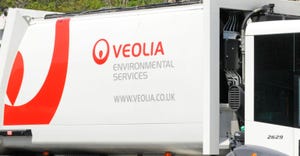Given the Difficulties of building or expanding a landfill, getting the most out of an existing site's footprint is critical. Through compaction, a landfill operator can conserve airspace and expand the lifespan of a facility, perhaps by as much as 20 percent.
At the heart of effective compaction are the compactors themselves. In general, the more that a compactor weighs, the denser it makes the waste that it rolls over in a landfill. In recent years, manufacturers have focused both on maximizing the weight of the compactors and ensuring that the weight is transmitted to the vehicles' wheels as effectively as possible. It's not uncommon for landfills to now use compactors that weigh 125,000 pounds or more.
Compaction is, in part, a function of a compactor's weight, speed and the number of passes that it makes over the waste. A general rule is to drive over a stretch of waste five times. However, after the first couple of passes, the amount of compaction achieved per pass begins to diminish.
Landfill operators urge their colleagues to make sure that the wheel and cleat design works well with the type of waste and soil prevalent in a site. They also recommend examining a manufacturer's reputation for maintenance. Extended downtime can be particularly burdensome for landfills, as many sites do not have extensive back-up fleets.
Furthermore, operator comfort is something to consider. Air conditioning, joysticks (instead of steering wheels) and large windows all are items that can improve a driver's performance and reduce on-the-job strain.
Helping Hands
While the compactors may be the bread and butter of compaction, landfill operators know that other products and technologies are valuable allies in the effort to maximize airspace. For example, many landfills have installed global positioning system (GPS) units on their compactors. The devices can help the drivers of compactors keep track of the number of times they have passed over a strip of waste. The units also can make ultra-precise measurements on cell heights and slope angles, which can give drivers a much more accurate view of how well their compacting equipment is doing its job.
Landfill operators also have realized that alternative daily covers (ADCs) can aid compaction efforts. A landfill's working face must be covered at the end of each day, and operators typically use a layer of soil to do so. However, ADCs, such as tarps and foams, can use less airspace than soil and can therefore increase the amount of room available for trash. Deciding which ADC may be right for a particular site requires an evaluation of climate, availability and costs, among other factors.
Bioreaction — the practice of recirculating leachate and possibly other sources of moisture — can increase the rate at which landfilled waste decomposes and therefore allow trash to be compacted at higher densities. In the standard dry-tomb landfills, leachate is collected and transferred off site to be treated. The amount of moisture in a landfill has traditionally been one of the more difficult factors in compaction to control; too much of it can create ponding issues and too little can leave waste too dry to effectively compact.
While compaction in dry-tomb landfills typically reaches a density of between 1,300 pounds per cubic yard, some recent studies have shown that bioreactor landfills can achieve a compaction density of up to 2,000 pounds per cubic yard. A landfill operator once used the following analogy to describe to Waste Age the benefits of bioreaction for compaction: “If you took flour and a rolling pin and rolled it over dry flour, you're only going to compact it so much and that's it. When you add water and mix it with flour, you can run that rolling pin over the flour, and you can roll it until it's paper thin.”
The U.S. Environmental Protection Agency, Washington, has estimated that the use of bioreaction can result in a 15 to 30 percent gain in landfill space. Advocates of bioreaction also argue that it results in improved methane gas management and shorter closure times. Practitioners also note the benefit of avoiding the costs of hauling leachate off site and having it treated. While the technology likely will become more prevalent in years to come, the practice is more common now in areas with heavier rainfall, such as Florida.
Worth the Effort
Maximizing a landfill's existing footprint is not an easy task. However, with heavier compactors and a variety of other products and technologies — such as GPS, ADCs and bioreaction — operators can get the most out of their sites and hopefully delay the need for an expansion or a new landfill as long as possible.
About the Author(s)
You May Also Like




